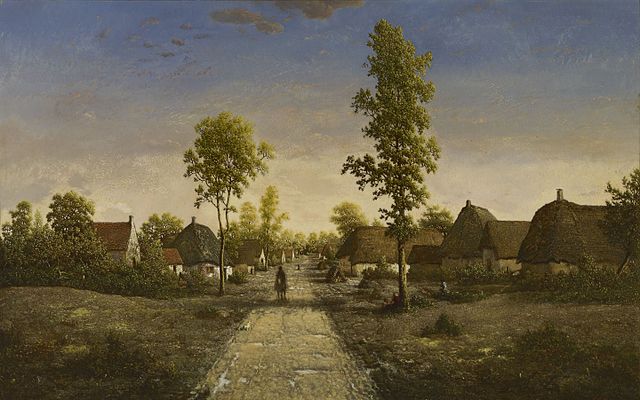Jean-François Millet was a French artist and one of the founders of the Barbizon school in rural France. Millet is noted for his paintings of peasant farmers and can be categorized as part of the Realism art movement. Toward the end of his career, he became increasingly interested in painting pure landscapes. He is known best for his oil paintings but is also noted for his pastels, Conté crayon drawings, and etchings.
Portrait by Nadar, c. 1856-58
The Sheepfold. In this painting by Millet, the waning Moon throws a mysterious light across the plain between the villages of Barbizon and Chailly. The Walters Art Museum.
Woman Baking Bread, 1854. Kröller-Müller Museum, Otterlo.
Harvesters Resting (Ruth and Boaz), Museum of Fine Arts, Boston (1850–1853)
The Barbizon school of painters were part of an art movement toward Realism in art, which arose in the context of the dominant Romantic Movement of the time. The Barbizon school was active roughly from 1830 through 1870. It takes its name from the village of Barbizon, France, on the edge of the Forest of Fontainebleau, where many of the artists gathered. Most of their works were landscape painting, but several of them also painted landscapes with farmworkers, and genre scenes of village life. Some of the most prominent features of this school are its tonal qualities, color, loose brushwork, and softness of form.
Corot, Road by the Water, c. 1865–70, oil on canvas. Clark Art Institute
Charles-François Daubigny, The Pond at Gylieu, 1853
Théodore Rousseau, Becquigny, Somme, c. 1857
The Gleaners. Jean-François Millet. 1857. Musée d'Orsay, Paris.








